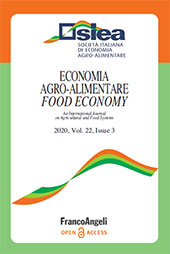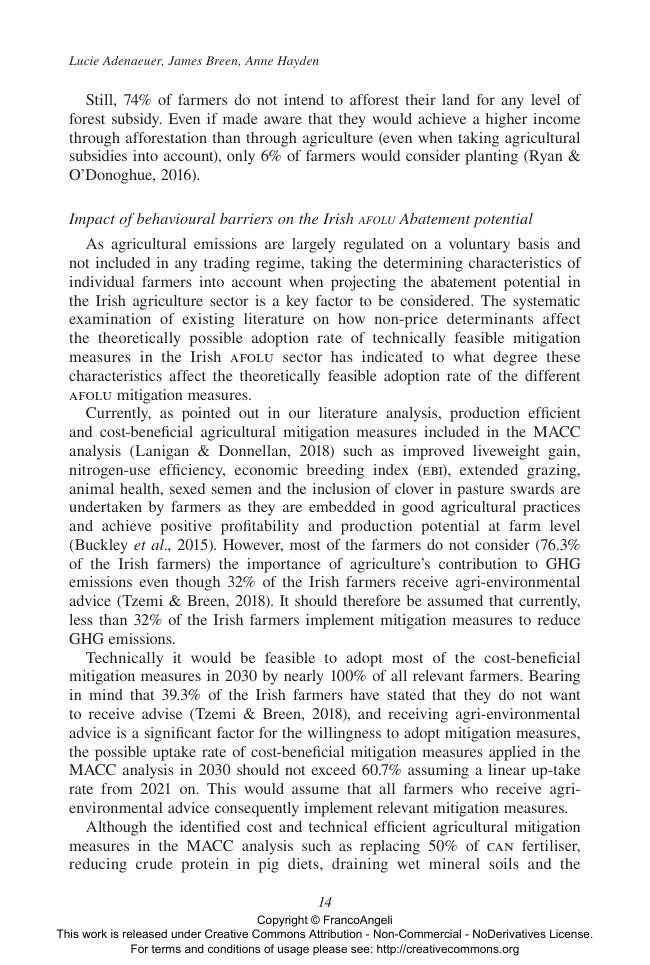Insights in overcoming the non-adoption of voluntary agricultural ghg mitigation measures in Ireland
P. 1-26
Agricultural Greenhouse Gas (GHG) emissions in Ireland areprojected to increase up to 21 Mt CO2eq by 2030 mainly drivenby increased dairy cow numbers and increased nitrogen fertiliseruse. In response to the growing public awareness of the GHGemissions' environmental impact, the Irish government publishedthe Climate Action Plan in 2019, which identifies the agriculturalsector's leading role in reducing GHG emission and increasingcarbon removals to achieve the national GHG emission targetsby 2030. Marginal Abatement Cost Curves (MACCs) on IrishGHG emissions have projected the total technically feasiblemitigation potential for the Irish agriculture, forestry and land use(afolu) sector to be sufficient enough to achieve the set targetsby 2030. Although these mitigation measures are available andwhen implemented, would mostly lead to a win-win situation,the voluntary adaptation rate by farmers is low.
This studyaddresses the most significant determinants of voluntary adoptionof mitigation measures by systematically examining existingliterature on how and to what extent non-price determinants affectthe voluntary adoption rate of technically feasible mitigationmeasures in the Irish afolu sector. The main identified nonpricedetermining factors were the degree of farmers' awareness regarding man-made ghg emissions, receiving agrienvironmentaladvice, implementation costs, profitability and sizeof farms, land quality and the type of farm enterprise. Integratingthe gained results in the former macc analysis enabled us to adoptthe implementation rates of the cost-efficient afolu mitigationmeasures accordingly.
The non-price determinants impact thevoluntary uptake rate of afolu mitigation measures to the extentthat the adjusted total Irish afolu abatement potential is 47%lower than technically feasible. Considering that 51.6% of thetotal estimated afolu abatement potential in 2030 is offsetthrough Irish forestry, which at current afforestation rate will turninto a net carbon source by 2035, a significant gap occurs to anypotential Irish and eu ghg reduction targets. To substantiallyhelp bring the nexus between agricultural development and ghgemission targets in Ireland closer together, policy measures, thatdifferentiate between the different type of afolu mitigationmeasures, need to be implemented to enhance the uptake rate ofcost-beneficial and cost-effective measures. This would have thepotential to reduce the level of agricultural ghg emissions by2030 in a way that it would converge towards possible eu andIrish ghg emission reduction targets. [Publisher's text]
Fait partie de
Economia agro-alimentare : XXII, 3, 2020-
Articles du même numéro (disponibles individuellement)
-
Informations
Code DOI : 10.3280/ecag3-2020oa11042
ISSN: 1972-4802
KEYWORDS
- GHG emission, MACC approach, Farmer's decisionmaking process, Abatement adoption, Mitigation Policy



